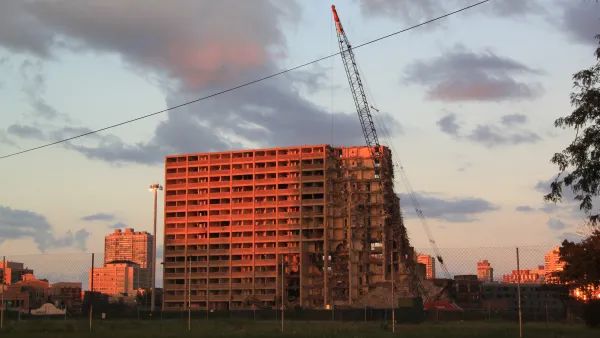With the demolition of notorious high-rise housing projects such as Cabrini-Green over the last decade and a half, Chicago became a model for a new approach to public housing. A new study tracks former high-rise residents to see how they've fared.
As the Chicago Housing Authority (CHA) prepares to release a revised version of its 12-year-old Plan for Transformation - "the largest, most ambitious redevelopment effort of public housing in the United States" - a new study by the Urban Institute of 381 families that once lived in the Madden-Wells and Dearborn housing complexes seeks to examine just how successful that influential plan has been.
According to , "Public housing residents in Chicago are marginally better off today than when they lived in the high-rise towers that have since been torn down, though more social services are needed to prevent a backslide, a study scheduled to be released Monday finds."
"Continuing problems with poverty and crime in their new neighborhoods point to a potentially dark future for many of those nearly 16,000 families, particularly children, the report by the Washington-based Urban Institute says."
What the study seems to make clear is that more than a change of scenery is required to improve people's lives.
"You still have a lot of people with very severe health problems, low levels of employment, lots of criminal justice involvement, all the kinds of things that they had before," Susan Popkin, the lead researcher in the study said. "Where we saw the improvements in terms of people's mental health, physical health and employment was when the housing was coupled with very intensive supportive services for a subset of residents."
Another obstacle: despite the goal of the CHA to move public housing families into "areas of opportunity" that are socially and economically diverse, "just seven of the 381 families tracked by researchers live in areas which fit that category."
FULL STORY: Study: CHA residents marginally better off than when living in high-rises

National Parks Layoffs Will Cause Communities to Lose Billions
Thousands of essential park workers were laid off this week, just before the busy spring break season.

Retro-silient?: America’s First “Eco-burb,” The Woodlands Turns 50
A master-planned community north of Houston offers lessons on green infrastructure and resilient design, but falls short of its founder’s lofty affordability and walkability goals.

Delivering for America Plan Will Downgrade Mail Service in at Least 49.5 Percent of Zip Codes
Republican and Democrat lawmakers criticize the plan for its disproportionate negative impact on rural communities.

Test News Post 1
This is a summary

Test News Headline 46
Test for the image on the front page.

Balancing Bombs and Butterflies: How the National Guard Protects a Rare Species
The National Guard at Fort Indiantown Gap uses GIS technology and land management strategies to balance military training with conservation efforts, ensuring the survival of the rare eastern regal fritillary butterfly.
Urban Design for Planners 1: Software Tools
This six-course series explores essential urban design concepts using open source software and equips planners with the tools they need to participate fully in the urban design process.
Planning for Universal Design
Learn the tools for implementing Universal Design in planning regulations.
EMC Planning Group, Inc.
Planetizen
Planetizen
Mpact (formerly Rail~Volution)
Great Falls Development Authority, Inc.
HUDs Office of Policy Development and Research
NYU Wagner Graduate School of Public Service




























